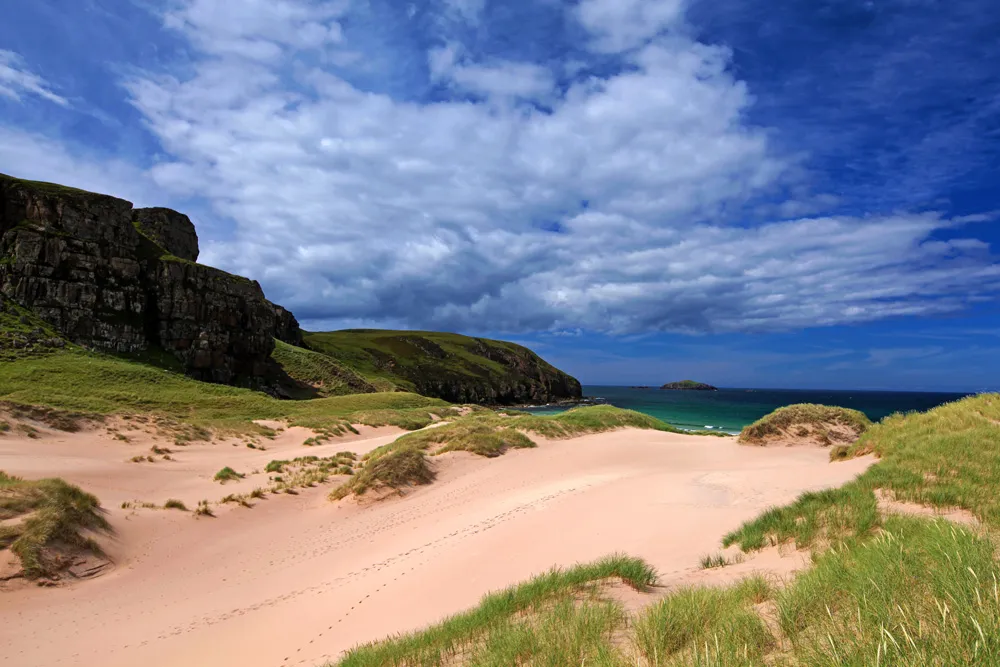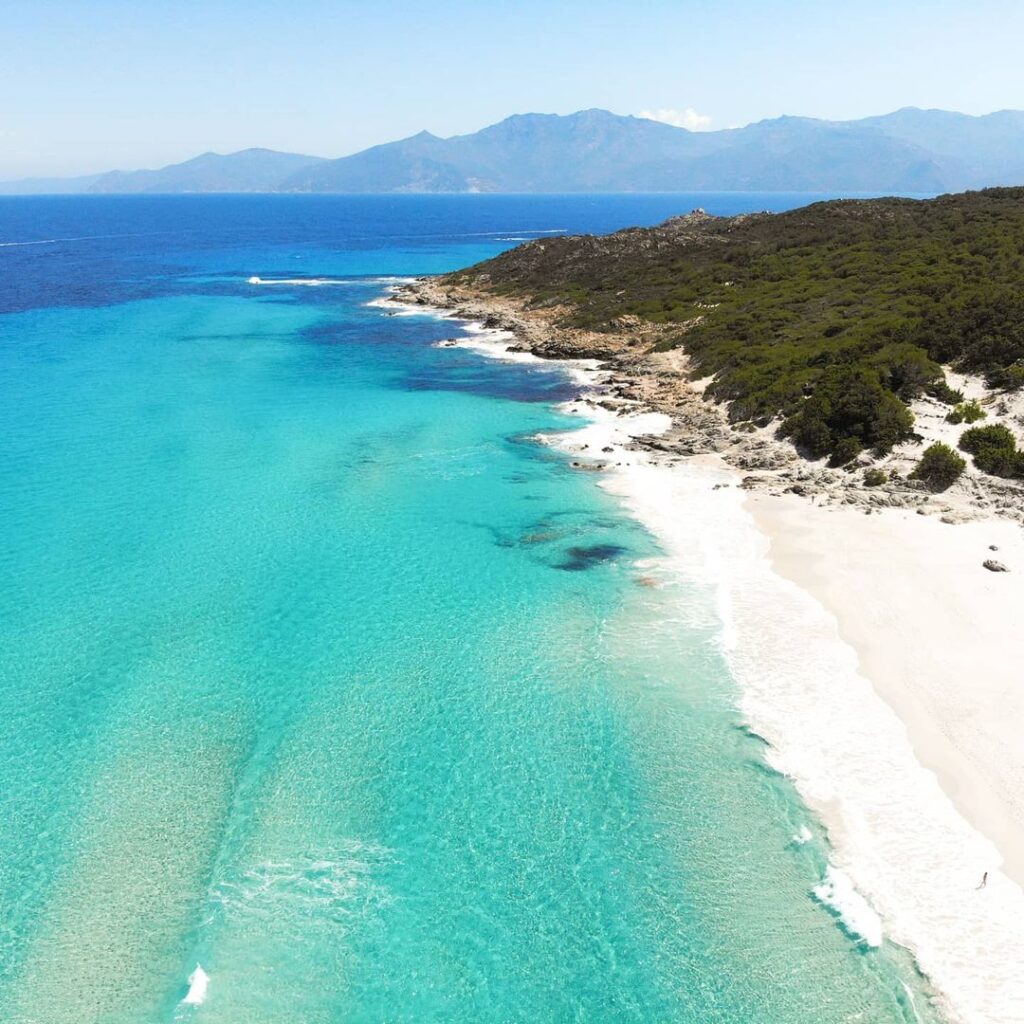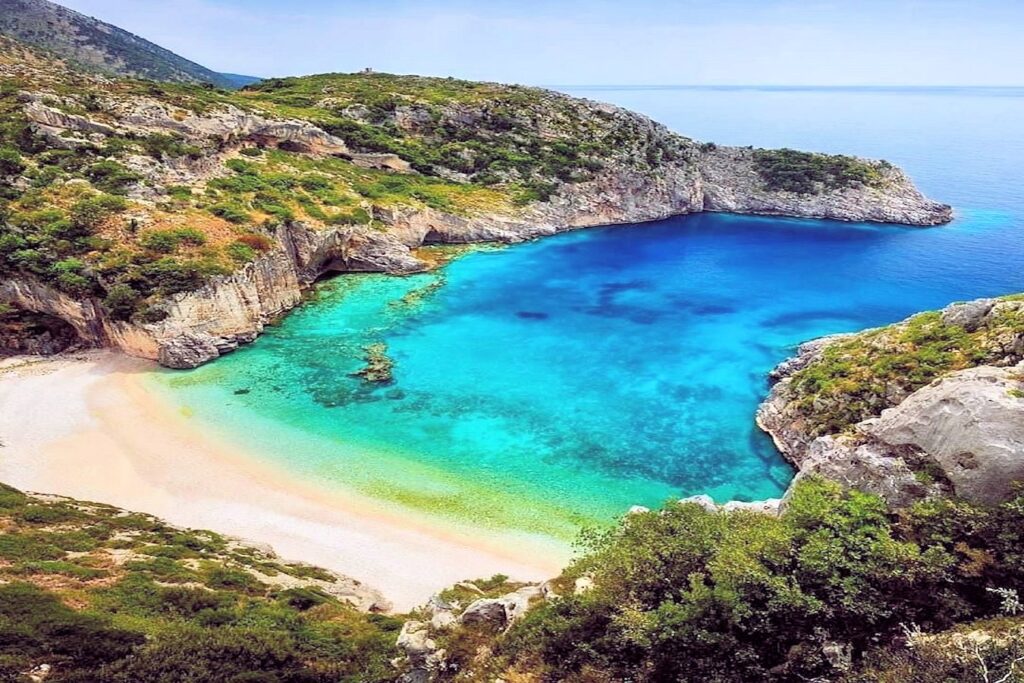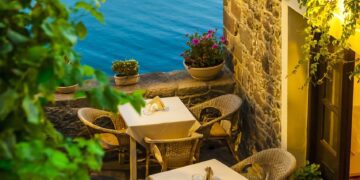Europe’s coast is dotted with name-brand beaches that flood your feed every July. Forget them. These seven stretches of sand demand a little legwork—but pay you back with crowd-free swims, no-filter panoramas, and bragging rights that beat yet another Mykonos sunset. Grab the daypack; let’s go off-grid.
1. Sandwood Bay – Sutherland, Scotland
Why it stays under the radar
Reaching Sandwood means a 6.5-kilometre (four-mile) hike across peat moorland—a windswept prelude that scares off casual beachgoers. Your reward: a mile-long sweep of rose-gold sand, towering dunes, and Am Buachaille sea-stack holding court offshore. Even in August, you’ll share it with more sheep than people.

Quick logistics
- Trailhead: tiny Blairmore car park, 90 min drive from Ullapool.
- Time: 2 hours out, 90 minutes back (pack layers; weather swings fast).
- Best season: May-June (long daylight, fewer midges).
2. Plage de Saleccia – Agriates Desert, Corsica, France
Postcard looks, back-country access
One kilometre of talc-white sand and Caribbean-blue water—yet no road. Rent a 4×4 for 12 km of bone-rattling track or catch a shuttle boat from Saint-Florent, then hike the last hour through fragrant maquis. When yachts drift off for lunch, you’ll have the pines and powder sand almost to yourself.

On-the-ground intel
- Bring: shade (no facilities), 2 L of water per person.
- Stay: wild camp behind the dune line (permitted; leave no trace).
- Photo tip: aim south toward Cap Corse for that endless-aquamarine gradient.
3. Gjipe Beach – Albanian Riviera, Albania
A limestone canyon that dead-ends in paradise
Gjipe hides at the mouth of a gorge, squeezed between towering cliffs. Park near St Theodor Monastery and hike 3 km of rocky track (about 1.5 hours) or arrive by kayak from nearby Jale. The pebbly cove hosts a handful of eco-camp spots and a shack that grills the day’s catch. No signal, no stress.

Essentials
- Must-do: scramble 15 minutes into the gorge for shade and dripping stalactites.
- Timing: September for 26 °C water and emptied-out hostels.
- Upgrade: book one night in a beaches tent—bioluminescent plankton often spark after dark.
4. Platja des Coll Baix – Mallorca, Spain
Mallorca’s hidden north-coast amphitheatre
Forget Magaluf. From the Alcúdia peninsula, a steep goat path (expect some hands-on scrambling) drops to a crescent of fine grey shingle framed by 200-metre cliffs. Turquoise water, zero bars, and—thanks to that sketchy descent—barely a dozen sun-seekers even in peak season.
Pointers
- Trail stats: 45 minutes down, 60 up; wear grippy shoes.
- Arrive early: the cove loses sun by late afternoon as cliffs cast shade.
- Pro move: pack snorkel gear; shoals of bream patrol the rocky edges.
5. Kokkinokastro Beach – Alonnisos, Greece
A splash of colour in the Sporades
Kokkinokastro translates to “Red Castle”—one look at the rust-red cliff stabbing into cobalt Aegean and you’ll get it. Pine forest meets ochre rock, backed by island silence (no big ferries stop here). The sands are golden-pebble, the vibe is bring-your-own-umbrella.
Need-to-knows
- Access: 15-minute scooter ride east from Patitiri harbour plus a short dirt track.
- Best light: late afternoon when the cliff glows crimson—your camera’s auto-saturation will freak.
- Extra loop: snorkel to the tiny islet 70 m offshore; legend pegs it as a Mycenaean settlement.
6. Praia da Ursa – Sintra, Portugal
Europe’s wild west
Just north of Cabo da Roca—the continent’s western tip—Ursa lies crouched beneath shark-fin stacks and wave-lashed cliffs. A 20-minute cliff path switches back to a steep final scramble (watch loose gravel). Once down, rugged pillars and tannin-tinted sand feel prehistoric. No services, plenty of space.
Fast facts
- Footwear: sturdy trainers; flip-flops stay in the pack for the beaches.
- Low-tide bonus: explore hidden sea caves on the south end.
- Shoulder season: April or late October—Atlantic swells thunder and sunsets burn neon without the crowds.
7. Spiaggia di Mezzavalle – Conero Riviera, Italy
Marche’s cliff-backed secret
South of busy Ancona, Mezzavalle sits under Monte Conero, accessible only by two thigh-burning footpaths or by SUP from Portonovo. The payoff: aquamarine Adriatic, bleached-white shingle, and a single rustic trattoria serving spaghetti alle vongole straight from the bay.

Practicalities
- Path: 20-minute descent; expect a 30-minute calf workout on return.
- What to pack: cash (card machine? forget it), extra sunscreen—cliff shade is scarce.
- Stay late: locals build driftwood fires after dusk; join with a bottle of Verdicchio.
Planning Cheat-Sheet
| Beaches Access Effort Facilities Ideal Month Instagram Angle Sandwood Bay 2-hr moorland hike None June Lone sea-stack at golden hour Saleccia 1-hr boat + hike / 4×4 Snack hut (peak) September White-on-turquoise sandbar Gjipe 3 km gorge trek Eco-camp, grill May/Sept Drone shot of canyon mouth Coll Baix Steep 45-min trail None October Cliff walls framing teal water Kokkinokastro Scooter + short walk Pop-up umbrellas July Red cliff meets ultramarine sea Ursa 20-min cliff path None April Rock spires against Atlantic swell Mezzavalle 20-min descent Single trattoria June Chalk cliffs and emerald shallows |
Final tips for hidden-beaches hunters
- Pack in, pack out. Most spots have zero bins—your rubbish is your responsibility.
- Check tides and swell forecasts (especially Ursa and Coll Baix) to avoid being cut off.
- Start early. You’ll nail soft light for photos and grab shade before midday heat.
- Respect local rules. Camping is tolerated in some areas (Sandwood, Saleccia, Gjipe) but forbidden in others.
- Share sparingly. Post that hero shot, then keep the geo-tag vague—let these sandbars stay hidden a while longer.
Bookmark this guide, lace up, and claim your slice of European shoreline that the algorithm hasn’t discovered yet. When the feed scrolls past another overcrowded hotspot, you’ll know you’re already someplace better, just you, the tide, and a stretch of sand that still feels wild.














